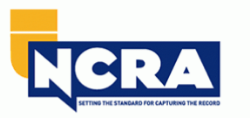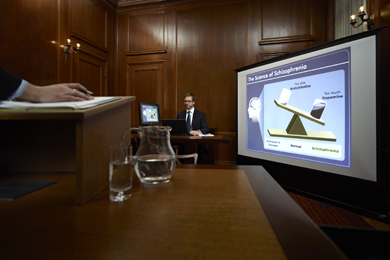Trial Presentation Reliable Services to Support Litigation and Case Success
Trial Presentation Reliable Services to Support Litigation and Case Success
Blog Article
Astound the Court: Crucial Components of a Powerful Test Presentation
Vital components such as comprehending the audience, crafting a compelling story, and mastering spoken and non-verbal communication are critical components of an efficient discussion. As these elements link, they form a natural approach that not only notifies but likewise involves jurors on multiple degrees.

Understanding Your Audience
Comprehending your target market is a pivotal element of efficient test presentation. A successful presentation rests on the capacity to realize the demographics, worths, and predispositions of jurors. This comprehension informs exactly how disagreements are mounted, proof exists, and sob stories are crafted, ensuring that the message resonates with the jurors on a personal level.
Study shows that jurors come from diverse backgrounds and may have differing degrees of comprehending concerning legal process. In addition, comprehending the jurors' prospective biases and life experiences permits the test presenter to anticipate arguments and address worries proactively.
Efficient trial discussion likewise involves observing jurors' responses during the proceedings. Being in harmony with non-verbal hints can provide understanding into their engagement and understanding, enabling for real-time adjustments in method. Eventually, an extensive understanding of the audience not just improves communication however also constructs connection, raising the probability of a beneficial end result. Engaging with jurors as people instead of a cumulative unit is crucial in promoting a solid connection in the court room.

Crafting a Compelling Story
Crafting a compelling story is necessary in assisting jurors through the intricacies of a situation. A well-structured story not only simplifies complex legal principles however additionally engages jurors on an emotional degree, making the information extra relatable and unforgettable.
To attain this, attorneys should begin by recognizing the core message they desire to communicate. This message should reverberate with the jurors' values and experiences, fostering a link that transcends simple facts. The story should unravel realistically, offering events in a clear series to avoid complication. This sequential method can aid jurors follow the development of occasions, emphasizing domino effect.
Integrating human components-- such as individual stories or narratives-- can additionally boost the narrative's impact. These aspects stimulate compassion, allowing jurors to imagine the repercussions of the situation on genuine lives. In addition, employing a consistent style throughout the discussion enhances the major argument, making it simpler for jurors to maintain crucial points.
Eventually, an engaging story changes a test discussion from a plain address of facts into a persuasive story that mesmerizes the jury, motivating them to ponder with both reason and emotion.
Using Visual Aids
Incorporating visual aids into a trial discussion can dramatically boost jurors' understanding and retention of info. Visual materials such as graphes, layouts, pictures, and videos can transform intricate lawful ideas and evidence right into conveniently absorbable layouts. By involving several senses, these help enable jurors to imagine the case's crucial elements, making it much easier for them to comply with along and comprehend complex details.
Furthermore, well-designed aesthetic help can highlight vital points and highlight relationships in between different pieces of proof. Timelines can properly show the series of events, while annotated photos can clear up certain details pertinent to the case. This not just aids in understanding however also strengthens the story presented by the lawyer.
Extremely intricate or cluttered visuals may bewilder jurors and take away from the message. Ultimately, efficient aesthetic communication can be a powerful tool in convincing jurors and helping them reach notified verdicts.
Mastering Verbal Communication
Reliable spoken communication is important in a test presentation, as it works as the primary ways where lawyers share their arguments and get in touch with jurors. Grasping this ability involves clarity, persuasion, and engagement. Attorneys should express their factors plainly and concisely, avoiding legal jargon that might confuse jurors. Simplicity in language fosters understanding and aids jurors realize intricate issues presented during the test.
Furthermore, tone and pacing considerably effect how messages are obtained. this website A certain tone communicates authority, while ideal pacing enables jurors to take in information without really feeling bewildered. Lawyers ought to also differ their vocal inflections to stress bottom lines and maintain jurors' rate of interest throughout the discussion.
Furthermore, the company of verbal disagreements is essential. Structuring the narrative logically and coherently helps jurors follow the attorney's logic, making it less complicated for them to retain essential details. Utilizing influential techniques, such as narration, can also boost the psychological vibration of the debates presented, thereby producing a much more profound link with jurors.
Ultimately, mastering spoken communication not just strengthens a lawyer's case however likewise cultivates count on and relationship with why not look here the jury, considerably boosting the chances of a favorable verdict.

Engaging With Body Language
Nonverbal communication plays a crucial function in trial discussions, frequently communicating messages that words alone can not share. Body movement, incorporating gestures, posture, face expressions, and eye contact, dramatically affects exactly how jurors view the integrity and sincerity of the presenter. A certain position, with shoulders back and an open position, can infuse trust fund, while closed-off body movement may suggest defensiveness or uncertainty.

Faces should show the feelings related to the case, enhancing the narrative existing. A sincere expression during a touching minute can elicit compassion and strengthen the emotional allure. Eventually, grasping body movement is crucial for efficient trial presentations, as it boosts verbal interaction and establishes a compelling presence that resonates with the jury.
Verdict
In verdict, astounding the jury necessitates a strategic strategy that includes understanding the target market, crafting a compelling narrative, using visual aids, grasping verbal interaction, and involving with body movement. Each component plays a vital function in producing a powerful trial presentation that reverberates with jurors on both emotional and intellectual levels (trial presentation). By integrating these elements successfully, lawful specialists can significantly improve their ability to persuade and affect court decision-making
Report this page